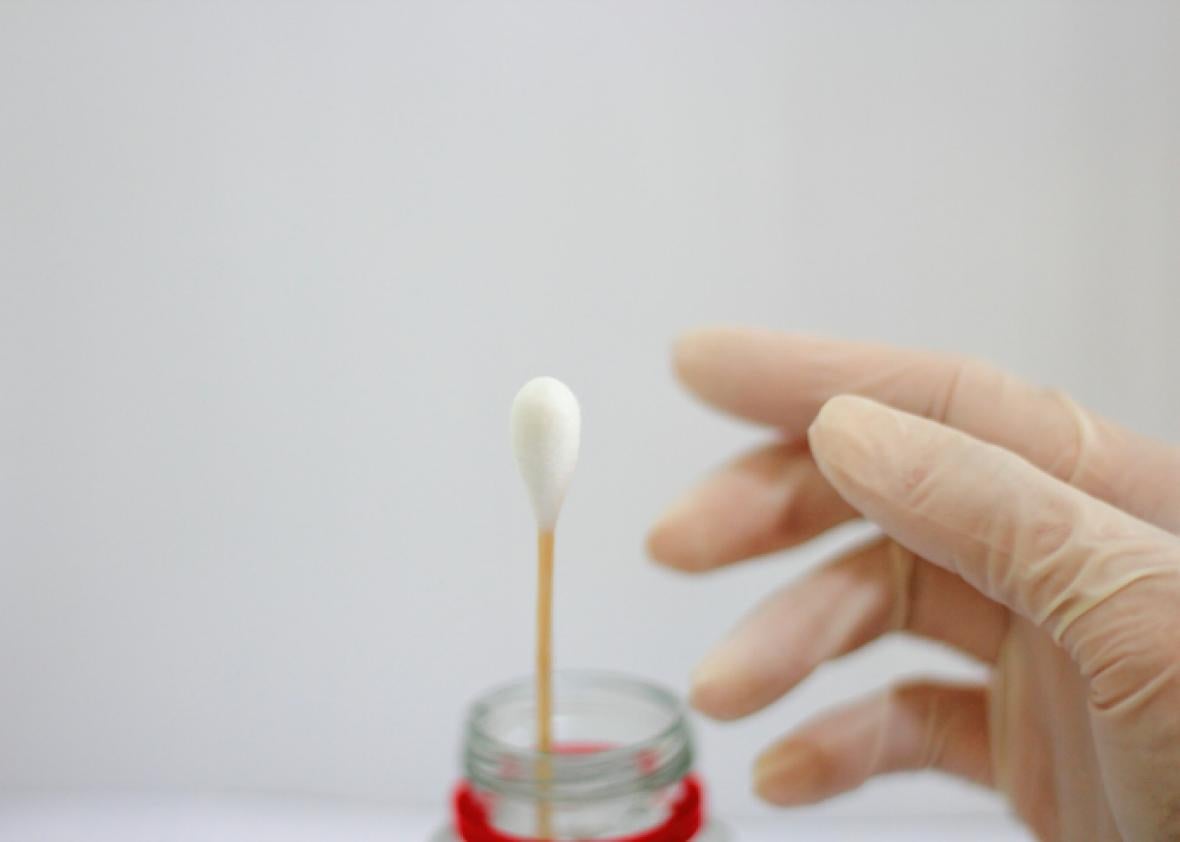Two recent biomedical engineering graduates from Brown have invented a new way to improve the swabs used in forensic testing after a sexual assault: Make them more like pregnancy tests.
With a swab that changes color when it comes into contact with semen, Bella Okiddy and Richard Park hope to lower barriers to sexual assault reporting and get faster results for survivors and law enforcement. Currently, forensic sexual assault exams can take months or years to yield results for the survivor, who might spend that time agonizing over whether or not his or her rape kit found any physical evidence. These swabs could give them some measure of immediate closure.
Okiddy and Park, who graduated with a master’s and an undergraduate degree, respectively, last month, recently launched a company called Technologies Against Assault with nearly $26,000 from Indiegogo and a matching $25,000 from a Brown post-grad fellowship. They are making prototypes of their designs and hope to release the swabs in hospitals sometime in 2017.
Park is motivated by his own experience: He was sexually assaulted by a male student when he was 18 and touring colleges. “Back then, I didn’t know much. I was drunk. I hadn’t been educated on what to recognize,” he said in an April interview. “So I thought it was my fault. I only recognized what had happened when I got to Brown and sat through the alcohol and sexual assault talks that all first-years go through during orientation.”
Forensic exams after sexual assaults can take several hours and multiple swabs per area that may contain traces of physical evidence. “Immediately following the long and invasive examination, it is impossible to tell whether the biological and clothing samples will produce any forensic evidence,” the founders wrote in their fundraising statement. “This means that survivors leave the hospital without critical information that could help in deciding whether or not to continue reporting their assault.”
The technology Okiddy and Park employ in their swabs rests on microfluidics, the science of analyzing very small amounts of biological material, which expedites and simplifies testing. This would be a boon for the sexual assault forensic exam, a procedure in dire need of improvement. In many states, there are backlogs of thousands of untested rape kits. A Department of Justics grant recently allowed an Ohio county to test 4,800 languishing kits, and they’ve already yielded more than 250 new convictions. (The county’s findings are also contributing important new trend data on serial rapists.) There are no federal standards for training medical sexual assault examiners, and there is a countrywide shortage of trained practitioners, meaning some victims don’t get one. Timely access to a rape kit is crucial for sexual assault survivors; every hour she spends waiting for an exam or deciding whether or not to get the exam and report her assault, her body sheds more DNA evidence.
Park and Okiddy hope that survivors might feel more comfortable getting a full exam if they know there will be some kind of expedient response. The technology could be particularly comforting for survivors who can’t remember their assaults due to intoxication, drugging, or trauma—they can get one piece of concrete confirmation right away. Even if the swab doesn’t register any traces of semen, immediate information beats spending months in the dark.
